Karma Sha Tsankhang, also known as “Karma Shag Tsankhang,” was founded and governed by the Karma Kagyu sect. The name “Karma” in the monastery’s name originates from this sect.
Located in Chengguan District, Lhasa, it now belongs to the Gelug Pa of Tibetan Buddhism and is a subordinate monastery of Sera Monastery.
Karma Sha Tsankhang is a very small monastery, mixed with residential houses. In addition to the incense burners, the courtyard also has many flowers and plants.
Its first floor is residential, and the second floor is the Buddha hall of Karma Sha Tsankhang. The houses connected to the side door of the Buddha hall are inhabited by residents, so people often come out from the door.
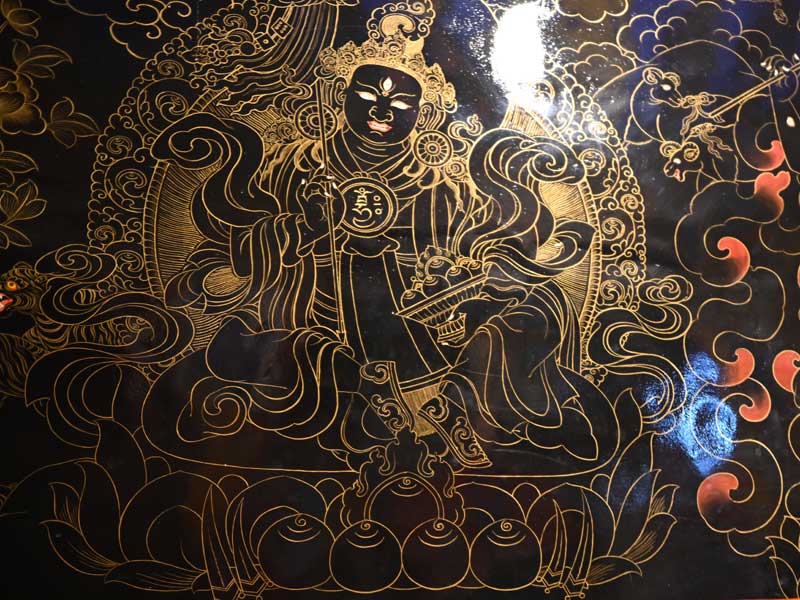
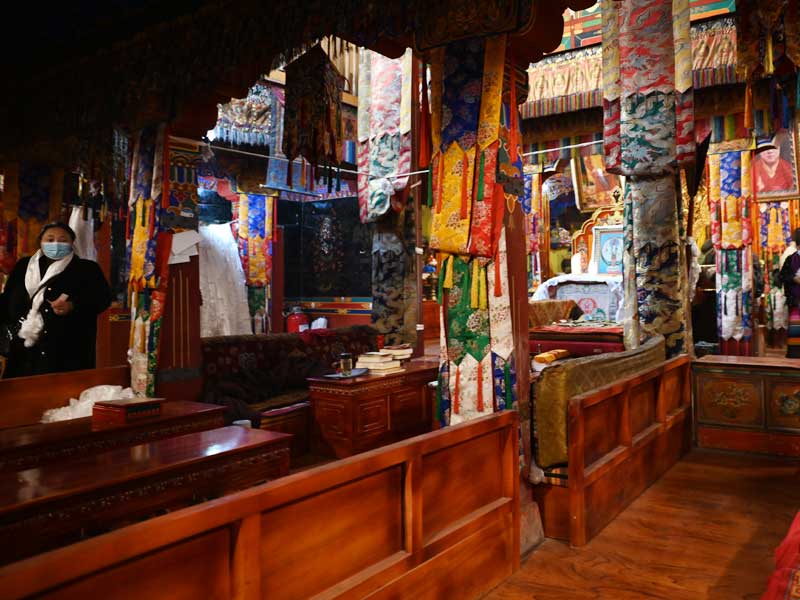
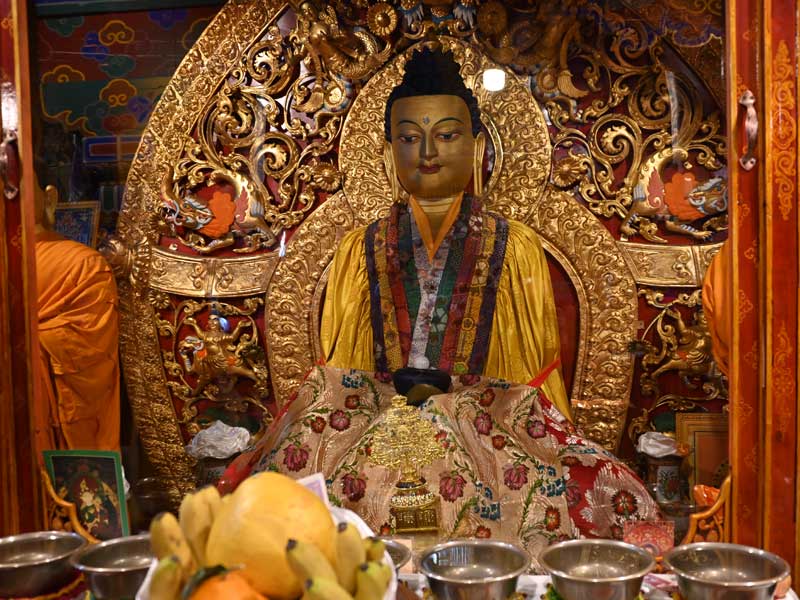
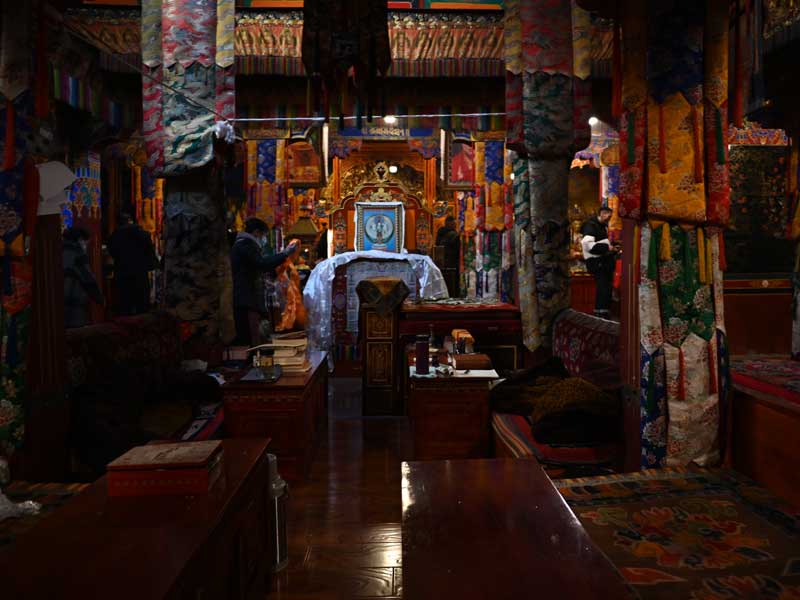
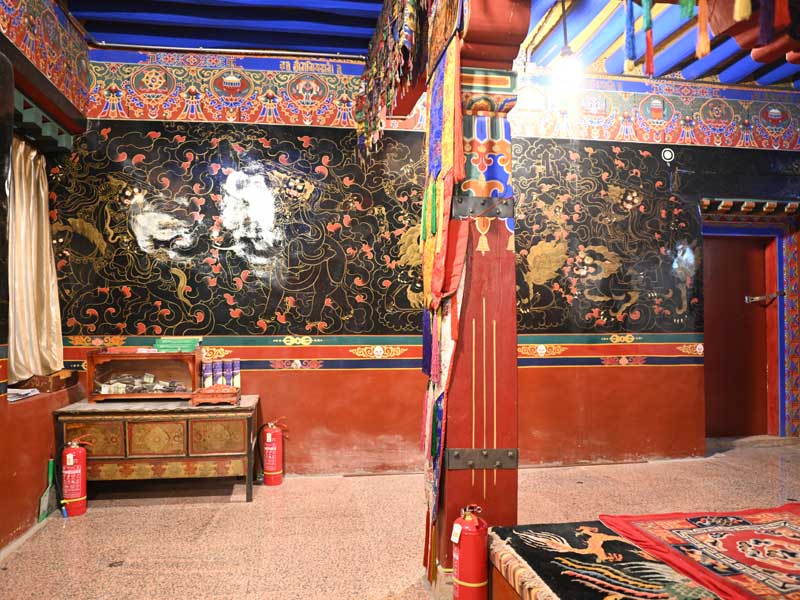
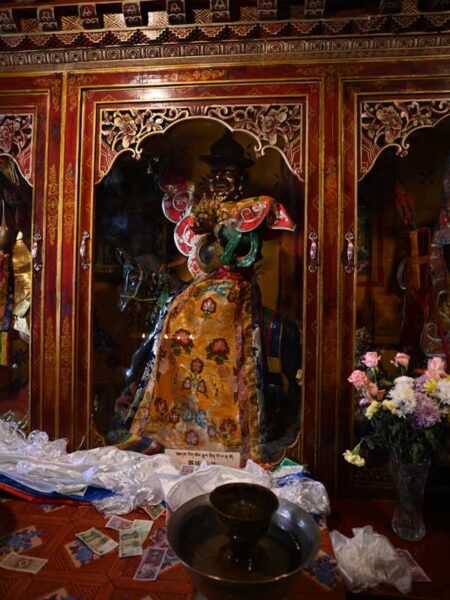
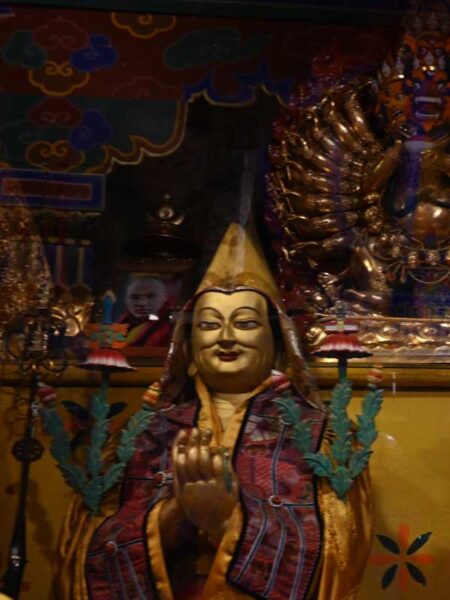
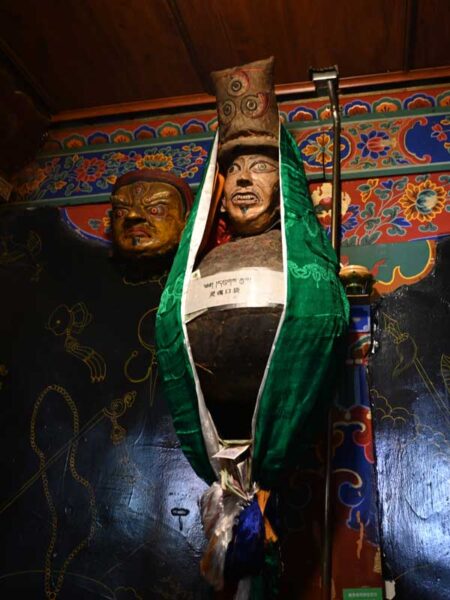
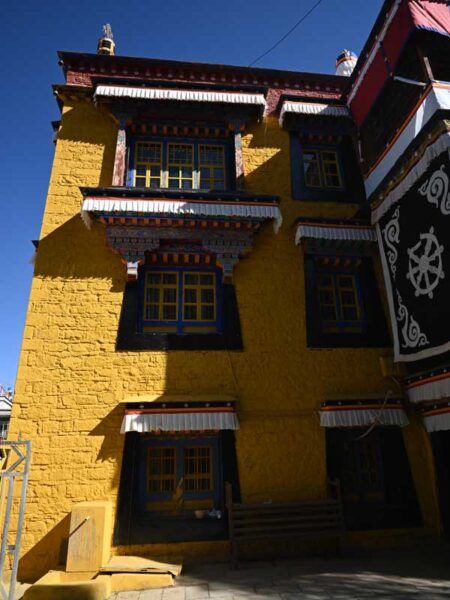
Tsan and Tsankhang
The term “Tsankhang” refer to places where “Tsan” is worshipped.
“Tsan” refers to a fierce deity. In reality, most “Tsan” beings, like humans, are sentient beings in the cycle of samsara, with many originally being fierce ghosts who were later tamed or subdued by eminent Buddhist monks, becoming fierce worldly protectors of the Buddhism Dharma.
“Tsan” is not a Buddha, Bodhisattva, or transcendent protector like Palden Lhamo or Mahakala, therefore not objects of refuge for Buddhists.
Buddhists do not take refuge in or pay homage to worldly protectors; they only make appropriate offerings and pray for mundane wishes.
In the old city of Lhasa, there are numerous Tsankhangs, with the so-called “Four Great Tsankhangs” surrounding the Jokhang Temple, located in the east, west, south, and north directions respectively:
- Khama sha Tsankhang in the east (the residence of the One-eyed Tsan),
- Rabsal Tsankhang in the south,
- Tsiu Marpo Hall in Tengye Ling Monastery in the west,
- Darpoling Tsankhang in the north.
Samye MonasteryThese four Tsankhang are all three-story buildings managed by Gelugpa-affiliated monasteries and have historical connections with the protector halls of Samye Monastery.
Location
Located near Jiri 4th Lane; after leaving Meru Monastery, crossing Beijing Road, and passing through a straight alley, you will see a yellow building, which is the Karma Sha Tsankhang
Alternatively, from the flagpole at the northeast corner of Barkhor Street, enter the Cuna Lane, walk to the end of the lane to arrive at Jiri 1st Lane, the first alley on the right is Wongdui Xingka Lane with the same orientation as Cuna Lane, enter the lane and walk to the end, the yellow building on the right is the rear wall of Karma Sha Tsankhang, then go around to the front of the monastery to enter.
Wongdui Xingka was once a well-known major market in Lhasa, the main trading place for mules and donkeys.
Breif
Karma Sha Tsankhang is one of the four major Tsankhang located in the east of the Jokhang Temple in Lhasa.
In the mid-15th century, the 7th Karmapa Chodrak Gyatso built a large new Karma Kagyu monastery, the Karma Sha Tsankhang, on the eastern outskirts of Lhasa, which could rival the scale of Sera Monastery and Drepung Monastery.
Karma Sha Tsankhang also served as the residence (Ladrang) of Chodrak Gyatso in Lhasa.
From the 15th to the 16th century, the monastery was also the residence of the Karmapa of the successive generations of the Karma Kagyu sect in Lhasa.
In 1642 AD, with the support of the Güshi Khan, the 5th Dalai Lama overthrew the Tsang Pa regime that followed the Karma Kagyu sect. The 10th Karmapa Choying Dorje fled the political center of Lhasa and went to Lijiang, Yunnan.
With the support of the Gelug pa, the Kagyu sect’s monasteries were destroyed, and Karma Sha Tsankhang converted to the Gelug pa, managed by Sera Monastery, becoming the guardian temple of Sera Monastery’s Mey Dratsang.
A monk was selected from Sera Monastery to serve as a shaman at Karma Sha Tsankhang, responsible for rituals such as “spiritual descent,” making him the first shaman of Karma Sha Tsankhang
During the Cultural Revolution in the 1960s, the monastery also suffered significant damage.
Around 1990, monks from Sera Monastery raised funds to begin the restoration of the monastery, which was subsequently reopened.
Ugu Bag
The “Ugu Bag” is one of the highly important treasures in the Karma Sha Tsankhang.
It is a Yak leather bag that holds significant importance for the Tibetan people’s understanding of life and death.
There are three such bags in Tibet; one is in Samye Monastery, the original residence of the Tsiu Marpo. The second one is currently located in the Karma Sha Tsankhang, one of the four major Tsankhangs in Lhasa. It is said that there used to be another one in the Darpoling Tsankhang, which is now missing.
It is believed that the last breath of a person (soul after death) is collected and placed inside this “Ugu Bag.” The bag then carries this last breath to the divine judgment of the Tibetan judge, the Red-Faced Tsiu Marpo.
Every year, the “Ugu Bag” must be taken to the Samye Monastery’s Guardian Hall once.
Guardian Deity of Karma Sha
The Guardian Deity of Karma Sha (known as “Choskyong” in Tibetan, meaning guardian deity, is a type of shaman) is not like the major shamans such as Nechung and Lhamo Choskyong, and cannot directly perform oracle rituals for the Dalai Lama and the Gaxag regime
However, the shaman of Karma Sha Tsankhang is significant as he belongs to the Sera Monastery, one of the three major monasteries in Lhasa with a prominent religious and political status.
The shaman of Karma Sha Tsankhang serves as the oracle for the abbots and all the monks of Sera Monastery.
Since the shaman of Karma Sha Tsankhang are considered protectors of Lhasa’s mountains, rivers, lands, and wealth, they are consulted by the officials of Lhasa, as well as by the beggar gangs consisting of Rekpa, Bendönpa, Aglo Sang, and others, along with lower-class citizens like corpse-bearers and wandering artists.
Therefore, many residents of Lhasa hold deep faith in Karma Sha, leading to the spontaneous formation of Karma Sha “Lami” groups in almost every neighborhood of Lhasa, meaning “followers of the Guardian Deity of Karma Sha Tsankhang.”
The incarnate of “Pehar” – Thalo Chogya
The spirit possessing the shaman of Karma Sha Tsankhang is the subordinate of the guardian deity “Thalo Chogya” from the Sera Monastery, known as “Chatri Gyanci”
Thalo Chogya is the chief guardian of the Mey Dratsang at the Sera Monastery and originally one of the five incarnations of “Peha”.
It is said that the supreme guardian of Tibet, “Peha”, transformed into five bodies due to the increasing number of people seeking divine intervention in Tibet, known in Tibetan as “Gu-an”, meaning “five bodies”.
The five bodies are known as the “King of the East Body”, “King of the North Accomplishment”, “King of the South Wisdom”, “King of the West Mind”, and “King of the Central Intent”.
These five kings are very busy with their duties, so they often send their deputies to represent them.
The King of the East Body, also known as “Thalo”, only manifests in the oracle of Karma Sha Tsankhang on the most important days of the year.
On regular days, it is the deputy “Chatri Gyanci” who manifests.
Chatri Gyanci
Chatri Gyanci is the chief protector deity of Karma Sha Tsankhang, capable of possessing individuals during rituals.
Legend has it that he possesses only one eye on his forehead, yet can see clearly ten thousand birds in the sky, distinguishing the gender of each. This ability allows him to discern between good and evil in the human realm.
His statue is housed in a shrine to the right of the main hall of Karma Sha Tsankhang, depicted with a gaping mouth, closed eyes, a single large eye on his forehead, and open arms. In his right hand, he holds a symbolic ring called Mtheb’khor, typically made of thick silver with metal grains inside, producing a sound when the deity’s moves his hand during possession, exuding a sense of authority.
Traditionally, male ordained monks serve as shaman for at Karma Sha Tsankhang, and upon their passing, the monastery shall seeks a new guardian.
Activities
Every year, starting from the beginning of the fourth month of the Tibetan calendar, the Shaman of Karma Sha engages in spiritual practice to communicate with the deities.
On the second day of each month in the Tibetan calendar, it is the customary day for the Shaman of Karma Sha to descend and deliver divine messages. Residents of Lhasa, especially members of the underworld, Nangtse shag’s bailiffs, and carriers of the dead, come to seek divination and offer sacrifices for guidance.
The Shaman of Karma Sha predicts various auspicious and ominous events that are expected to occur in the political and religious realms of Lhasa. These prophecies are then written on paper, or incorporated into patterns, and demonstrated using flags and objects.
Drolin Gyisang Festival
During Drolin Gyisang Festival, which falls on the 15th day of the fifth month of the Tibetan calendar (also known as “incense burning festival”), the shamans of various sizes from Karma Sha Tsankhang are invited by the Karma Sha Tsankhang followers — the “Lami” groups to celebrate at the Norbulingka. On this day, the shamans enter a trance state and proclaim prophecies for the people.
This festival has become a celebration for the worship of the “Pehar Guardian” and his generals “Chatri Gyanci,” as well as their spokesperson shamans.
During Shoton Festival
During the Shoton Festival, the most sacred day for the Karma Sha Tsankhang’s Oracle is the 30th day of the sixth month of the Tibetan calendar. Traditionally, the Sera Monastery sends a large group of monks to welcome the Karma Sha Tsankhang’s Oracle to the stone platform in front of the main hall of Sera monastery, where the oracle descends and the followers of Karma Sha Tsankhang engage in a ritualistic dance.
The Karma Sha Tsankhang’s Oracle predicts various auspicious and ominous signs that will occur in both the political and religious realms of Lhasa. These prophecies are then written on paper, incorporated into designs, and demonstrated using flags and symbolic items.
On the way back to Karma Sha Tsankhang, a large crowd of beggars, officials from the Nangtse Shag, vagabonds, and numerous devotees follow the oracle. They shout, sing, behave wildly, and display various papers, designs, and items symbolizing the oracle’s prophecies to the public as they walk.
The next day, which is the first day of the seventh month in the Tibetan calendar, the followers and devotees of the Karma Sha Tsankhang’s Oracle paste these papers on the streets of Barkhor, the rooftops of bridges, the entrances of noble residences, and various temple gates in Lhasa. They also exhibit flags and symbolic items in the streets.
This annual prophecy by the Karma Sha Tsankhang’s Oracle causes a sensation throughout the city of Lhasa every time, becoming a hot topic of discussion among the residents in various taverns and tea-houses.
Pal Lhamo Festival
On the fifteenth day of the tenth month in the Tibetan calendar, the auspicious goddess “Pal Lhamo” is celebrated. The statue of the auspicious goddess at the guardian temple of the Jokhang Temple is carried by monks from the Meru Monastery as they circumambulate around the Jokhang Temple.
Upon reaching Ganden Tarchen, the oracle of the Karma Sha Shaman must invoke and welcome the deity while offering a ceremonial Hada and paying respects.
According to legend, “Pal Lhamo” is the daughter of the auspicious goddess “Panden Lhamo”; “Pal Lhamo” and “Chatri Gyanci” were once a loving couple, but Pal Lhamo’s mother, the auspicious goddess “Panden Lhamo” , intervened and separated the couple, allowing them to meet only once a year during this festival.
The day after the circumambulation, the statue of “Chatri Gyanci” will be carried out from Tshechokling Monastery across the Lhasa River, symbolizing a meeting with “Panden Lhamo”.
As “Panden Lhamo” bids farewell and continues on her journey, the Karma Sha Shaman will chase after for a while, showing a reluctant expression of parting ways.
Manifestation Ritual
During the time when the shaman of Karma Sha Tsankhang manifests the deity, the shaman wears an embroidered battle robe with four peach-shaped brocade shoulder pieces and a silver bronze mirror hanging on the chest, inscribed with the Tibetan word “deity,” possessing magical powers.
At the beginning of each manifestation, a ceremony is held to invite Chatri Gyanci to the altar and enter the shaman’s body.
Subsequently, the attendants and assistants of the shaman lift a helmet weighing around fifty to sixty pounds and place it on the shaman’s head.
This helmet, made of gilded brass, is adorned with five metal skulls symbolizing five fierce guardians, with three deity flags at the back, along with eagle and pheasant feathers.
As the assistants tighten the chinstrap of the helmet on the shaman, the blood flow is hindered, causing the shaman’s face to quickly redden, spit foaming at the mouth, eyes rolling, body trembling, and sporadically uttering words, interpreted as divine messages, promptly recorded by scribes on a sand table and conveyed to the worshippers.
Sometimes, the shaman may leap from the ceremonial seat, shooting arrows in all directions, brandishing swords, causing the worshippers to retreat in fear. However, the shaman does not harm anyone, as this symbolic act is meant to ward off evil spirits.
Note: Among the wizards in Lhasa, only the shamans of Karma Sha Tsankhang, Nechung Monastery, and Gadong are allowed to brandish swords during manifestations, but it is purely symbolic and does not cause harm.
During the manifestation ritual of Karma Sha Tsankhang’s shaman, there is usually a group of worshippers performing the “Karma Sha Vajra Dance,” consisting of seven segments. The performers, including beggars from Lhasa, servants from Nangtse shag, and vagabonds, dance wildly on the square, while the audience cheers enthusiastically.
It is said that in the past, the Gaxag regime did not grant official titles to shamans in ordinary neighborhoods.
However, in the 1930s, the Gaxag regime made an exception by appointing the shaman of Karma Sha Tsankhang as a sixth-rank monk official.
Unfortunately, the activities of the Chatri Gyanci shaman were forced to stop on the historical stage, and since then, there have been no more prophecies of deities appearing in the city of Lhasa.
A Legend
In Lhasa, there is a very well-known incident where a major fire broke out at the Jokhang Temple. Despite the efforts of the Nchung Monastery’s guardian deity, the fire could not be extinguished. It was only after the religious ceremony organized by Karma Sha Tsankhang that the fire was finally put out. This led to the popular belief that Karma Sha Tsankhang is the “Tibetan Fire Brigade.”



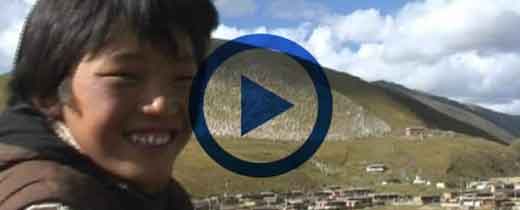
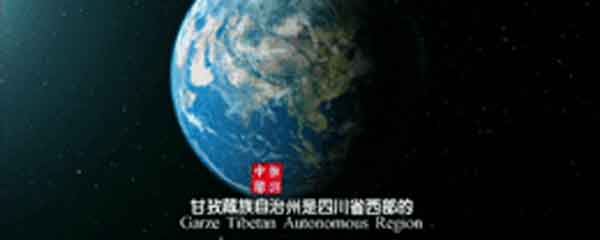
Leave a Reply